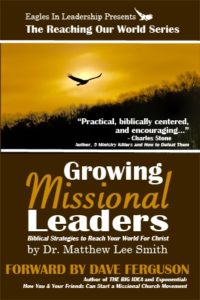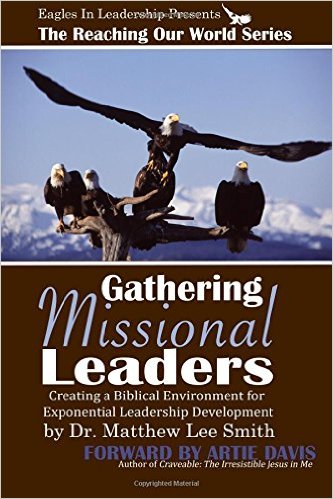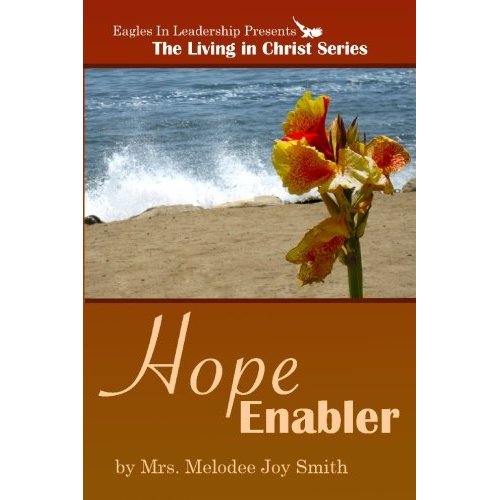by Dr. Matthew Lee Smith (c) 1999
 In part 1 we discussed the rise and decline of the urban church. We ended our
In part 1 we discussed the rise and decline of the urban church. We ended our
Somewhere between the birth and the death of the local church selfishness took center stage, replacing self-sacrifice. From a clear goal of reaching that community with the Gospel, the church wanders in an aimlessness that brings about its death.
God has a better plan!
In September of 1988, God sent me to this dying church in East Los Angeles Country as pastor. The church was in stage six, and as I walked towards my car the evening I accepted the call, the head elder told me, “Well, I hope you can make this place go. You’re our last hope.” Driving home I had no idea of what to do or what had happened to this church. What was most intriguing to me was the demographics of our community. When the church was formed, only a few thousand people lived there, and yet a vibrant church flourished! When Melodee and I arrived the community had over 56,000 people and was struggling to survive.
That night began my long road trip towards understanding the dying, urban church. Here’s what I learned in that eleven year “on the job” training, a gift given by a gracious and patient God.
This is work, the ministry!
Stage One: Focused on Mission. As I examined the stories of the few who were still at our church at the time of its birth, they told of the excitement of winning people to Christ. In their stories came comments like: “We all got into a car and brought our friends with us to hear the evangelist at church. Two of my friends received Christ that night.” In the birth of the church there was a clear focus on the Gospel mission. Seeing people brought to Christ provided the life and energy to continue the hard work of the ministry.
Stage Two: Focused on Discipleship. As the church expanded, it did so because it taught its people to reach out and grow in faith at the same time. It hit me while sitting at a mortuary one day with a family: Churches grow because they are filled with babies! There is an incredible excitement with new life that is missing when one is constantly losing people. Just as sorrow and hopelessness often result from the death of a loved one, so too joy and enthusiasm are generated at the birth of a new child. Expansion occurred at our church because of the constant excitement of new life.
Stage Three: Focused on Leadership. As each child grows, their parents teach and train them in the skills needed at that stage of life. So too, the growing church, often out of necessity, trains more and more new converts to take over ministry. By giving away the ministry, ownership developed at our church. One old-timer Charlie, then an elder, told me, “They gave me a three-hour training and put me in charge of a group of 5th grade boys. I was terrified at first. As the weeks passed I grew more confident. Then I started to love those boys. Pretty soon all of them had received Christ, been baptized and brought a friend to Sunday School.” It is here, when new leaders are developed, that the church takes on depth. It is also at this point that the focus must once again, intentionally be refocused on mission.
Stage Four: Refocus on Mission. Here is where the invasion into the community occurs. It is at this time that those who make up the church must make a Kingdom choice. Will they stay and “do it all over again?” Attempts were made in the 1970s and 1980s to reach out to the incoming Hispanics. Some were faulty in philosophy. Others were still jaded with prejudice. It wasn’t until we were deep into stage six that we effectively did the things necessary at this stage.
We began with a Spanish-speaking service. We sought out friends who were bi-lingual. We established relationships with children who were more fluent in English than their parents, inviting them to Sunday School and our youth programs. We made them a part of our church, of our family. As we intentionally sought to reach out to the second cultural generation of our church, we would be successful. Growth came slowly at first. With every new convert came new excitement and energy. With the new faces came new music styles and new ideas. Each energized the church in new ways.
Stage Five: Refocus on Discipleship. Here we began a one-on-one discipleship program after mass teaching some 30 people in a program. Appointing a couple to head up this program made the pastor’s job easier, and shared ownership in the ministry. The church began to regain strength, slowly reversing the effects of stage six. Roofs were repaired. Buildings were repainted. New music was purchased. New life began to rise from the decay. As the team of discipled men and women grew the possibilities also grew. After one particularly successful multi-church rally, the team members sat together in the back of the sanctuary, almost unwilling to go home. Drawing out their hearts I asked, “So what are you thinking?” Debbie said, “We did it!” “And …?” I asked her. “And … it feels so good!” she said. As the old-timers “parent” the new cultural generation, the church energy, ownership and financial levels rise. Ministry to others becomes the norm again as people are praying for their unsaved friends, relatives and co-workers. New babes in Christ bring more enthusiasm.
Stage Six: Refocus on Leadership. In order to assure the stability of the church when the “old-timers” of the first cultural generation are gone, these new disciples must be trained and handed the reigns of leadership. It is at this point that the graciousness of our first generation came forth. “We aren’t going to be here forever,” Paul told me one day as he nominated a young man for a position. “It’s time they learned like we did – by doing it!” In this transformation of ministry, hearts are shared. There is no longer the destructive language of “them” and “us.” Only “we” exists. Color and nationality no longer mean anything. All are one in Christ, and all are one family in him.
Stage Seven: Re-Refocus on Mission. And so the community will no doubt change again. If we have done our job right, the second cultural generation will make the hard choice and choose to birth a third cultural generation by focusing again on the Gospel mission. Soon, many people will have received Christ from several cultures and in several generations.
A vibrant, discipling church!
In order for this process to repeatedly occur, leadership must help the people maintain a focused mindset on three gospel elements: mission, discipleship, and leadership development. When the local church acts on these three priorities, seeing those who are all around them as their responsibility, its future is bright with hope!
————-
Eagles In Leadership exists to help you and your church. Should you desire, we are here to help assist you in your leadership needs.











